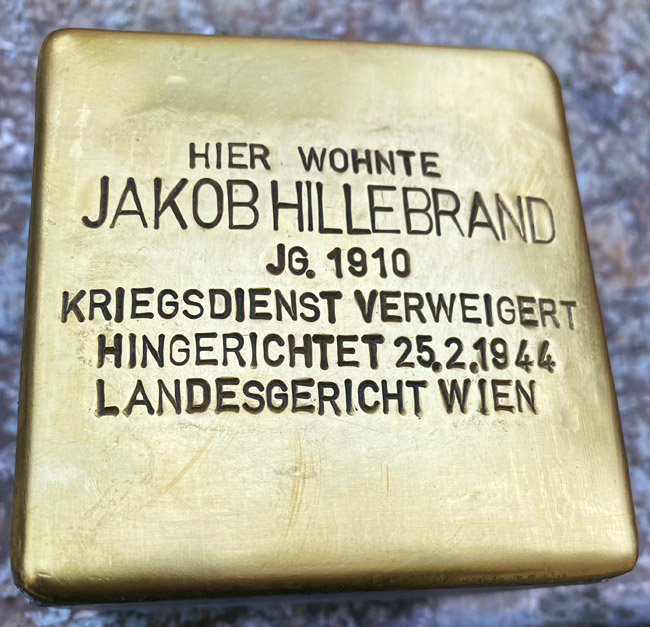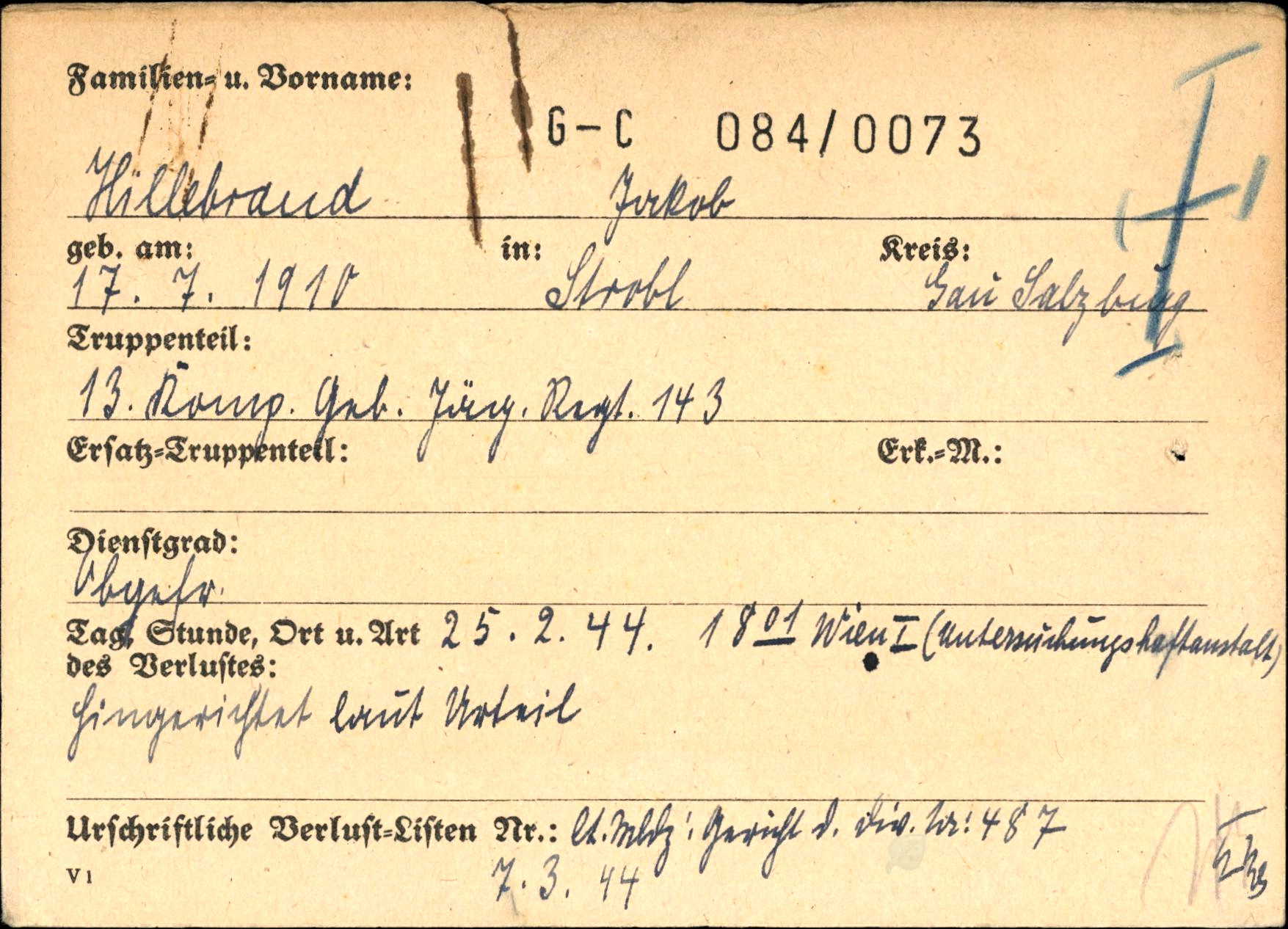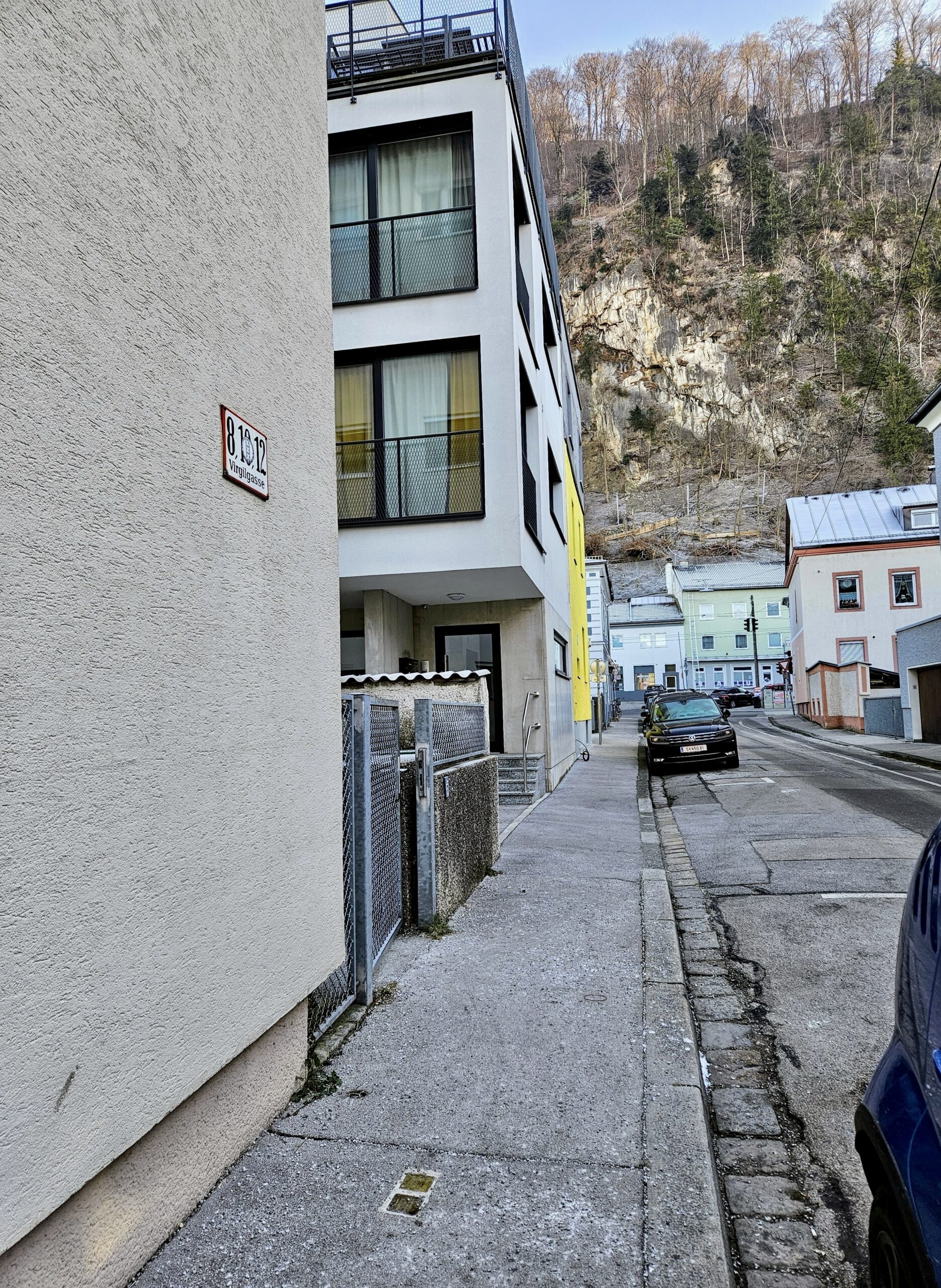Jakob HILLEBRAND was born in Strobl am Wolfgangsee (about 40 Km southeast of Salzburg) on July 17, 1910 and was baptized in the roman Catholic Church. He was the sixth of the fourteen children of Anna Hillebrand, née Weinbacher, and her bricklayer husband, Josef Hillebrand.
Their son Jakob was also a bricklayer and worked on many different construction sites over the course of the 1930s. In June 1938 he worked in the city of Salzburg for the first time. He lived variously in the Maxglan and Lehen neighborhoods, and once in the Scherzhauserfeld settlement on the outskirts of Salzburg.
At the beginning of the war year 1941, Jakob HILLEBRAND married Maria Ernst from the Thomatal in Lungau (in the mountains about 120 Km south of Salzburg). Their married life together was short as Jakob had to go into the German Wehrmacht. Maria continued to live in Salzburg, at 8 Virgilgasse.
On April 23, 1944 Maria gave birth to their son Ernst Peter Hillebrand in Salzburg. But by then his father was no longer alive.
His violent death can be reconstructed from a report about war losses: Jakob HILLEBRAND, Lance corporal in a mountain infantry unit in northern Finland, deserted during a home leave in the summer of 1943. He thus refused further front-line deployment in the Nazi’s war of aggression and annihilation.
The deserter Jakob HILLEBRAND had friends and relatives in Strobl am Wolfgangsee who could help hide him. But his hiding place was apparently betrayed to the Gestapo by an informer. This involved the Gestapo’s terror headquarters in Upper Austria (then known as the »Reichsgau Oberdonau«) rather than the one in Salzburg.
Research shows that on August 22, 1943, the Gestapo headquarters in Linz arrested five men together in the Salzburg municipality of Strobl: Josef Hillebrand, his sons Anton and Jakob, along with their friends, woodcutter Raimund Beinsteiner, and upholsterer Alois Taglöhner – all opponents of the Nazi regime.
The next day, 45-year-old Alois Taglöhner, who had been mistreated by the Gestapo in Bad Ischl prison, was dead – »suicide« according to the police report.
The deserter Jakob HILLEBRAND was 33 years old when he was sentenced to death by the military court of Division 487 in Linz on October 18, 1943. On February 25, 1944 he was guillotined at the Vienna Regional Court.
His father Josef Hillebrand, imprisoned for »aiding and abetting desertion«, died on 22 April 1944 while suffering greatly after his release – the day before the birth of his grandson Ernst Peter in Salzburg.
However, there wasn’t the end of the terror: on June 21, 1944, the People’s Court sentenced 39-year-old Raimund Beinsteiner to death for »aiding and abetting desertion«, a sentence that was carried out at the Vienna Regional Court on August 30. 1944.
Jakob’s 36-year-old brother Anton Hillebrand was also sentenced to death, but the sentence was reduced to long term imprisonment and he was lucky enough to experience the liberation in May 1945.
Their youngest brother Heinrich, however, was killed as a Wehrmacht soldier on the »Eastern Front« in February 1944 – just before his 20th birthday – »missing in action«, as it was officially called at the time.
In liberated Austria, their mother, who lived in St. Gilgen on the Wolfgangsee, received victims’ compensation because her husband, who had died as a result of his imprisonment, was recognized as a political victim.
But Jakob HILLEBRAND’s widow Maria and their son Ernst Peter (who continued to live in Salzburg for the rest of their lives) were both denied any victims’ compensation because Austria refused to recognize Wehrmacht deserters as victims until recently.
Sources
- Archive of the Salzburg Archdiocese: registration books
- Salzburg city archives: police registrations
- Salzburg State Archives: Victims’ Compensation File S-342
- Court Martial of Division 487 Linz (St. L. III 591/43): Report to the Wehrmacht Information Office Berlin
- People’s Court 3. Panel (led by Hans Duve): Death sentence against Raimund Beinsteiner and Anton Hillebrand on June 21, 1944 in Vienna
- Widerstand und Verfolgung in Salzburg 1934-1945, vol. 1, Vienna 1991, pp. 572f, 626
- Strobl am Wolfgangsee. Naturraum, Geschichte und Kultur einer Gemeinde im Salzkammergut, Johann Stehrer, ed., Strobl 1998, p. 203
Translation: Stan Nadel
Stumbling Stone
Laid 09.09.2024 at Salzburg, Virgilgasse 8



